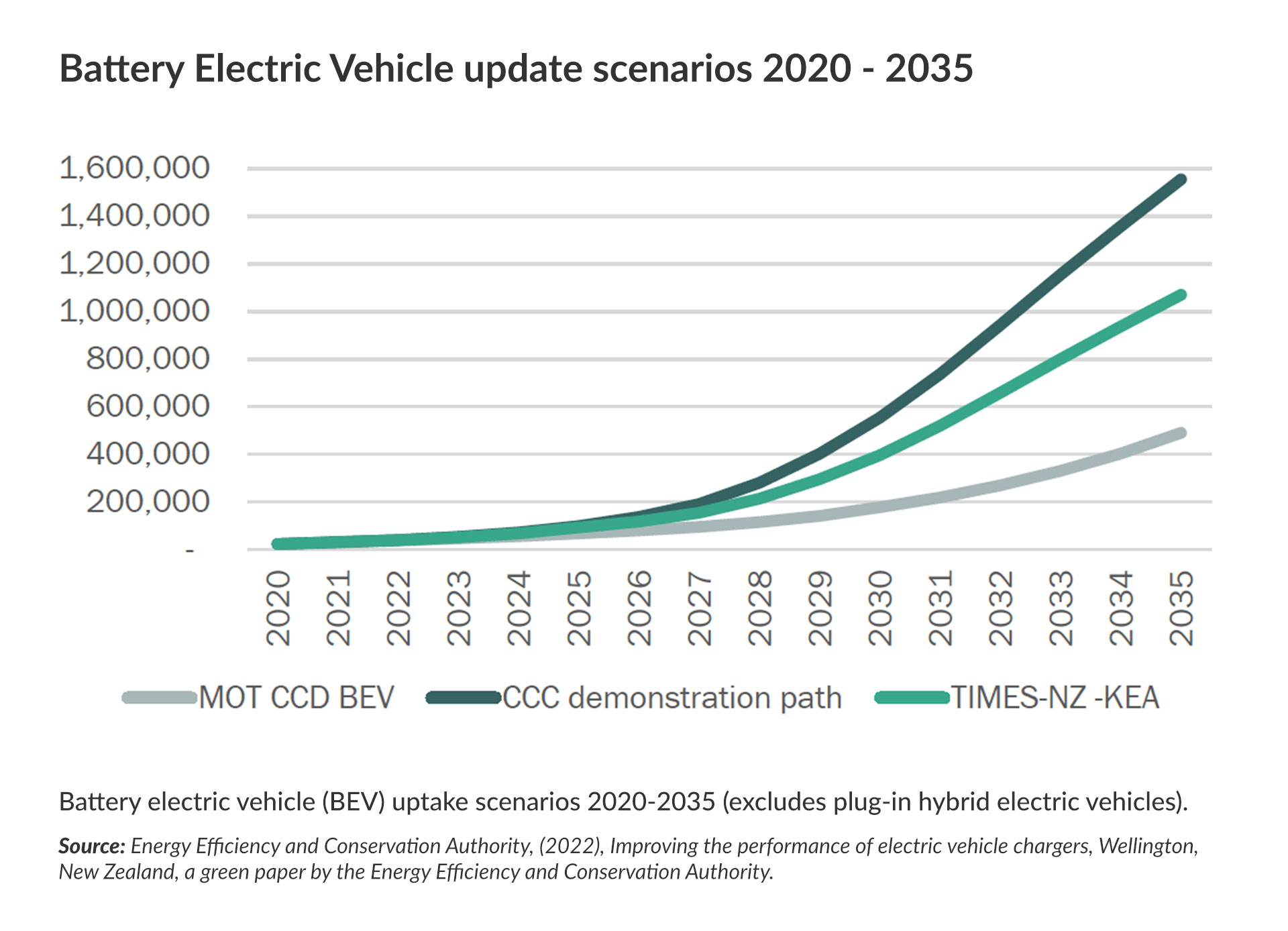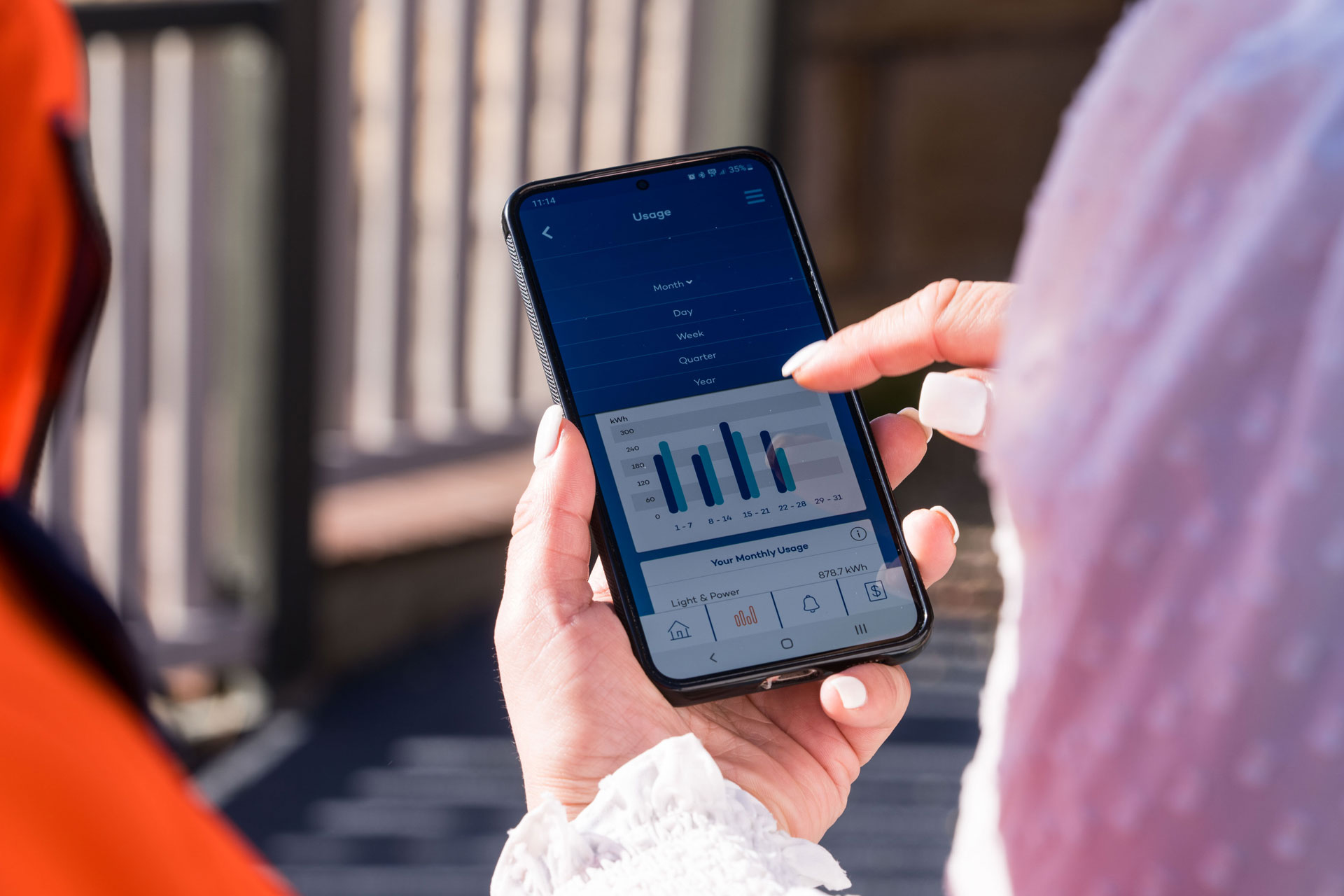Coming EV explosion to propel electricity system into 21st centurySponsored
The aim to turn 30 percent of our country’s light vehicle fleet electric by 2035 will require a rapid and large-scale roll out of smart and energy efficient charging infrastructure.
If we get that national deployment right, there’s also massive upside for energy consumers and our country’s electricity system.
New Zealand’s Energy Efficiency and Conservation Authority (EECA) is now looking at how this charging infrastructure could be managed and controlled so it creates opportunities for consumers and electricity networks and retailers.
It’s an opportunity to also future proof our electricity system so it can support an expected increase in other grid-connected distributed energy resources like solar, batteries and water heating.
It can make our electricity system fit for many years into the 21st century.

Problem + solution = opportunity
The government’s new emissions reduction plan will supercharge EV numbers across New Zealand from about 50,000 vehicles today to about 1.4 million in just over a decade.
There are all sorts of policy settings that need to be considered to help support this successful transition. However, the availability of charging infrastructure tops the list. And this new network of high capacity electric sockets will also have a major impact on electricity distribution and transmission networks
Consider this.
Network businesses predict that EV uptake has the potential to double network capacity requirements by 2050 if unmanaged.
Uncontrolled EV charging could also increase average household peak electricity demand across the country by 40 percent by 2050, according to projections from the Climate Change Commission, leading to an average $220 annual cost increase to supply electricity to each household.
The scenario goes something like this.
Surveys from EECA and consultancy KPMG show that about 82 percent of EV charging takes place from home. So when they arrive home each day, EV owners will all plug in and charge their vehicles at about the same time.
This will coincide with already high levels of peak electricity use, driven by the normal daily habits of nearly 2 million New Zealand households.
To meet this peak demand for power, new electrical infrastructure will have to be built, costing billions of dollars. It’s an inefficient investment because its only needed to supply power for a small period of the day - but electricity customers will still have to foot the bill.
A much smarter solution is to make sure the EV charging is managed and controlled.
At Intellihub we would go one step further and say you first need to make sure all these smart chargers are registered and visible to all electricity market participants – customers, retailers and networks.

Automated management of EV chargers unlocks benefits
The remote identification, connection and verification of smart electric vehicle chargers is crucial to their management and control, unlocking more DER, and extracting benefits for both customers and the electricity market.
Once each charger is verified, remote communication capabilities are enabled which allows core monitoring and control.
Once electricity businesses can see the devices, they can provide customers with payments and incentives in exchange for managing and controlling their charger – all with the permission of the customer.
Customers get access to rich information such as their EV charging data and as more DER devices are connected and markets mature, benefits increase.
In exchange, energy businesses are able to dynamically manage EV chargers and other consumer devices to reduce demand at peak times, reducing the need for network investment, and better managing wholesale electricity costs.
It requires a more sophisticated solution than the existing on/off ripple control system used to manage household water heating here.
Luckily, a neat and compliant solution already exists and has been used to solve a similar problem in the Australian energy market.

Intellihub’s Decentralised Energy Exchange
The deX platform, short for Decentralised Energy Exchange, was developed by energy tech innovator GreenSync with the support from the Australian Renewable Energy Agency and Clean Energy Finance Corporation.
It’s a cloud hosted digital platform designed to enable electricity grids to support more renewables, by managing the increasing levels of rooftop solar, electric vehicle charging and other DER.
Its agnostic approach to DER type, brand or applications means its adaptable to all technology pathways for connecting behind-the-meter DER, like EV chargers, to any utility platform used for DER monitoring and control.
It’s now being used to dynamically control rooftop solar systems in Western Australia and South Australia, two states with very high penetrations of residential solar systems.
Australia-wide, the opportunity adds ups to gigawatts of behind-the-meter solar generation that can be better managed and the benefits shared.
The success of deX has not gone unnoticed in other jurisdiction too, with the UK energy regulator taking a close look at it as a proposed solution for an automated, standardised, secure data exchange process for registering all of its small-scale energy assets, particularly EV chargers, heat pumps and solar installations.
It took the installation of nearly three million household solar systems, and ensuing system security risks and negative pricing events, before grid operators and governments in Australia sought a solution.
The emerging issue in this country of large-scale and uncontrolled charging of 1.4 million electric vehicles is a bit different to the problems caused by Australia’s spiralling increase in residential solar.
But Intellihub’s deX platform is an equally neat solution.
Go to: www.dex.energy
For more information, contact info@intellihub.co.nz.
By Lindsay Cowley, New Zealand CEO, Intellihub
